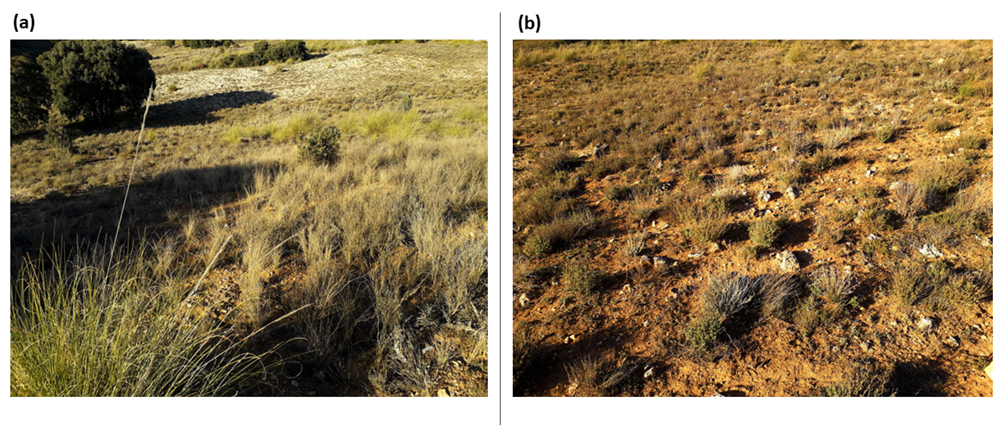Throughout April, we are featuring the articles shortlisted for the 2022 Harper Prize. The Harper Prize is an annual award for the best early career research paper published in Journal of Ecology. Angela Illuminati’s article ‘Coordination between water uptake depth and the leaf economic spectrum in a Mediterranean shrubland‘ is one of those shortlisted for the award.
👋 About me
I grew up in the Apennines in the centre of Italy. Under pristine skies full of stars, my passion for nature bloomed. As a teenager I loved mathematics, astronomy, and philosophy. My choice of undertaking a scientific path was surely inspired by my grandparents who were both scientists. I decided to combine my love for nature and science by taking a bachelor’s degree in Natural Sciences (Perugia, Italy), further motivated by ever-growing issues related to environmental pollution and nature conservation. During my first academic years, my curiosity was highly encouraged by my bachelor’s thesis mentor, and I became passionate about plant ecology. I further specialized in this field during my master’s degree at the University of Bologna (Italy) and, after carrying out short stays at different research centres in Europe, I started my PhD thesis in Spain at Rey Juan Carlos University (URJC, Madrid). During my PhD research, I investigated belowground plant-plant and plant-soil interactions in Mediterranean semiarid environments. I fulfilled my PhD with honours in September of 2022 and I am currently a post-doctoral researcher in the Area of Biodiversity and Conservation, URJC.
🔎 The shortlisted paper
Understanding plant functional strategies related to water and nutrient use is especially relevant in arid environments where the low availability of soil resources represents a strong limiting factor for plant productivity and survival, and is thus a main driver of species competition and coexistence. In this context, our research provided a new perspective about the link existing between water and nutrient use in a semiarid Mediterranean plant community.

We encountered evidence of a distinct ecohydrological niche partitioning among 23 coexisting species, a phenomenon which has been detected in several habitats, but only a few studies had previously considered a plant community perspective. Specifically, we detected a tight coordination between soil water uptake depth and leaf-level carbon and nutrient use strategies along the Leaf Economic Spectrum (LES) across coexisting species, with a shallow water uptake pattern generally associated with a more acquisitive carbon and nutrient use strategy, while a deeper water uptake pattern was linked to a more conservative carbon and nutrient use strategy.

Our results suggested that a more acquisitive plant strategy along the LES may necessarily require the exploitation of resources from nutrient-rich shallow soil layers after rainfall pulses. In contrast, a more conservative carbon and nutrient use strategy may be advantageous to species depending on more stable and reliable water sources from deeper, nutrient-poor soil layers.
In conclusion, our study provided an improved integrative perspective on plant functional strategies in dryland environments.
🌿 What’s next?
This study was part of my PhD research, and thus it was continued into two main directions according to the specific aims of the main project (ROOTS, CGL2015-66809-P) related to my PhD thesis. Specifically, to obtain a complete assessment on plant nutrient use strategies and their relationship with water use in a whole-plant framework, I measured key root traits to be integrated in the analysis (manuscript in preparation). In addition, to assess questions more directly associated to species coexistence in arid environments, I am currently exploring patterns of belowground functional diversity at a very fine neighbourhood spatial scale (manuscript in preparation), by integrating functional traits related to both water and nutrient use in a spatially explicit point-pattern context, where the belowground plant community was detected by applying DNA metabarcoding techniques as a first chapter of my PhD thesis.
As postdoctoral researcher, my future research activity will be developed in a new research project (QuerPin, PID2021-126927NB-I00) were key hydrological aspects, among other plant functions, will be explored in the context of intraspecific variability and niche coexistence processes. Besides carrying out my research, I am also teaching as assistant professor in botany and ecology courses at URJC (Madrid, Spain).
Find Angela on Twitter and GoogleScholar.
Read the full list of articles shortlisted for the 2022 Harper Prize here.

